
Peter Scott
Here Comes Your Neighborhood
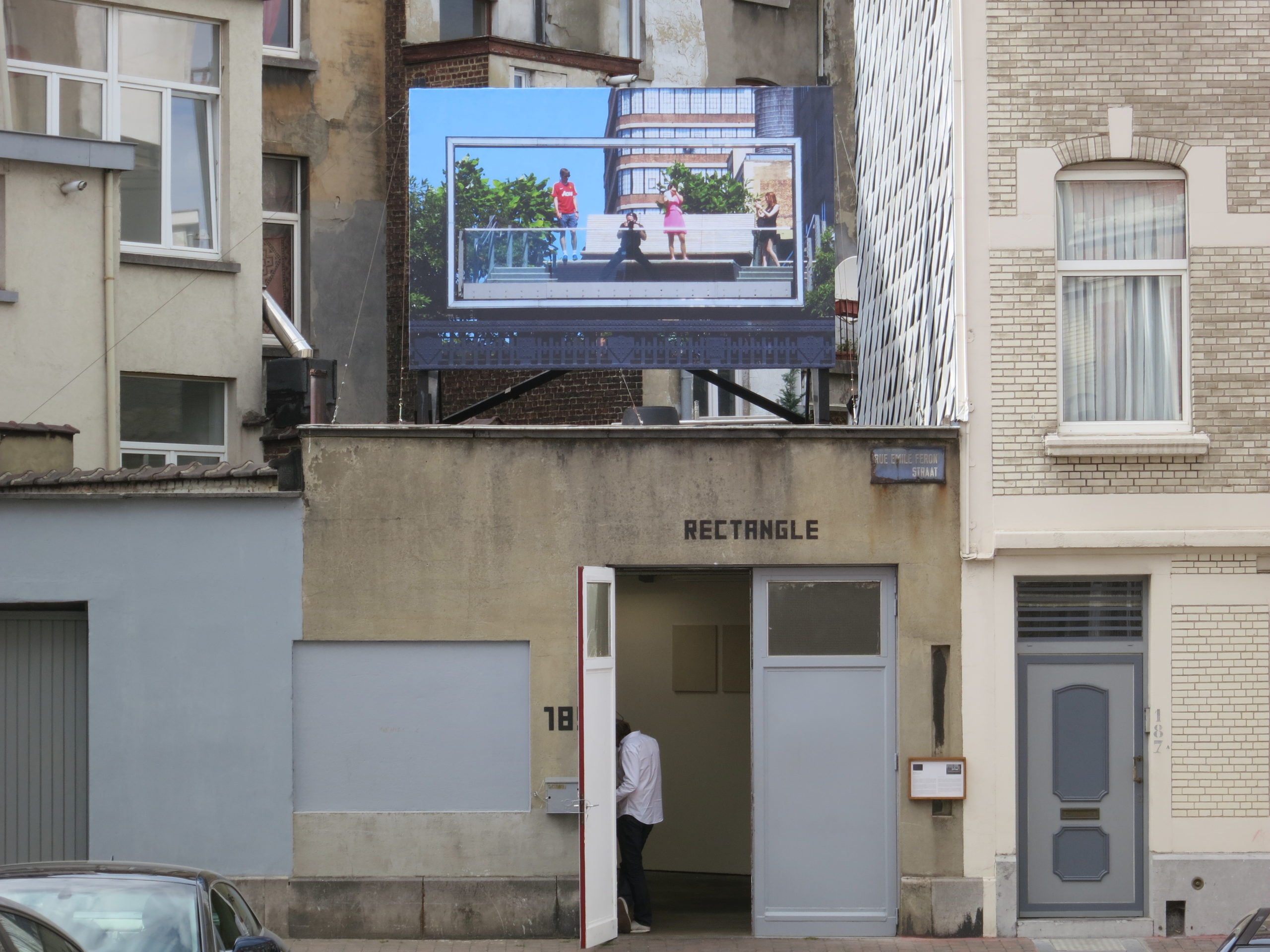
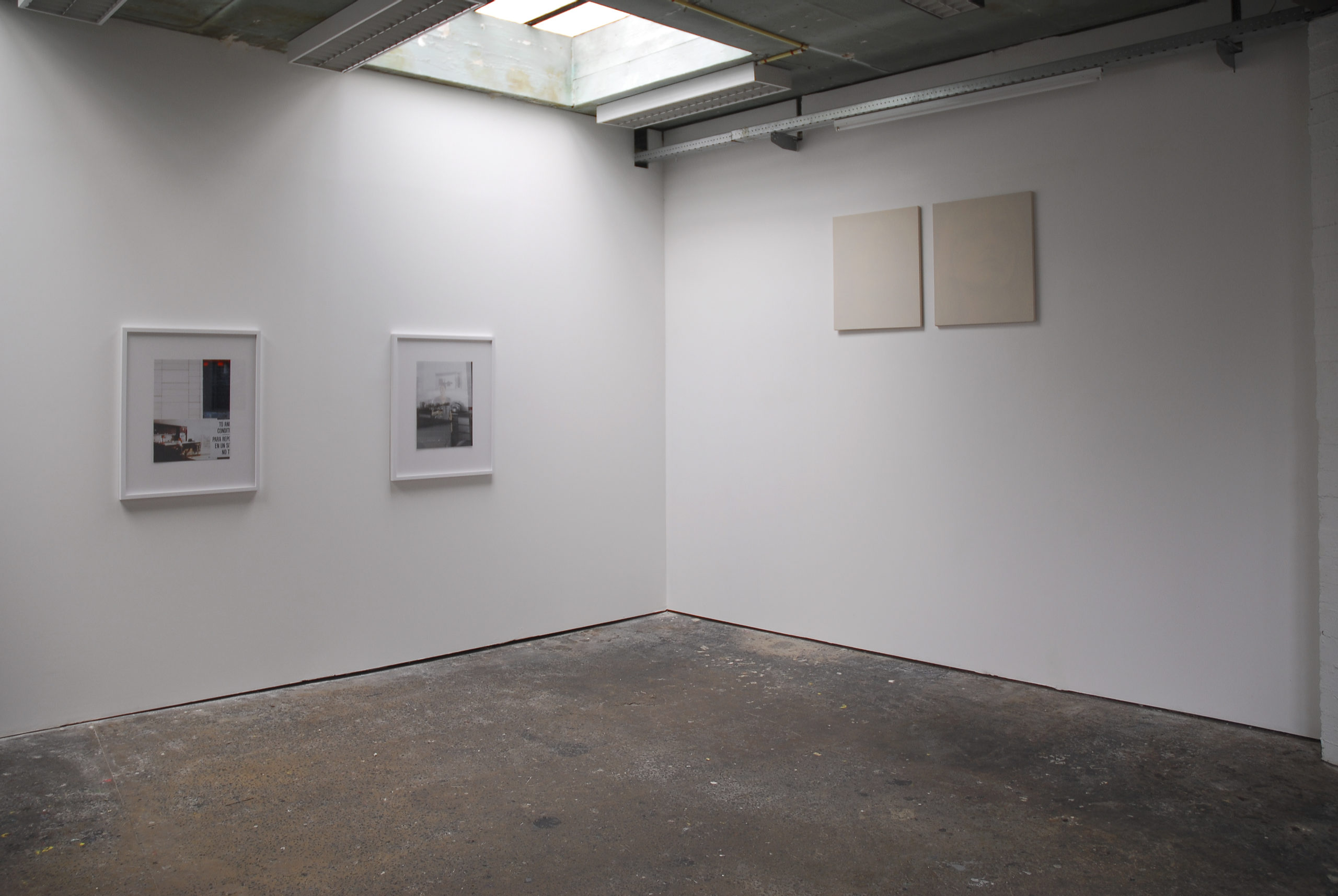
Suspended above the city and seen within a picture-like frame, the figures in the image on Rectangle’s roof inhabit a “living billboard.” Photographed across from the High Line park located in the Chelsea district on Manhattan’s west side, they are actors in the gradual reshaping of many urban areas from one of active participation to one of display. Watching as they are being watched, they are not, as in Hitchcock’s “Rear Window,” the subjects of an anonymous urban gaze, but are appropriated in their role as walking advertisements promoting the leisure city.
Situated in an area of rapid luxury development, the High Line park makes use of an abandoned elevated railway, which brought manufactured goods and produce to what was once a factory and warehouse district. Capitalizing on the industrial chic
of an abandoned 19th a century iron structure, the elevated railway was recently reconstituted for recreational use by the renowned architectural team Diller and Scofido, attracting developers who saw enormous potential in an urban beautification project as a site for luxury condos and hotels.
Facilitating what is essentially a wall of tourists which demarcate the exclusive gallery district from the housing projects of the “old city” across 10th Avenue, the High Line features “viewing areas” which employ the aesthetic sophistication of the site-specific pavilions of Dan Graham, an artist from whom the architects have liberally borrowed. Offering the visitor/viewer the chance to experience themselves as both seeing and being seen, the increasing self-consciousness of the “new city” is exemplified by the transformation of a quiet stroll in the park into an urban spectacle of high-end design and public display.
La “ville où il fait bon vivre” est un concept qui s’est répandu dans le monde industrialisé durant la dernière décennie. Il a été adopté par les municipalités les unes après les autres, modifiant ainsi bon nombre d’aspects uniques de la vie urbaine par le développement d’une homogénéité socio-économique auparavant associée aux banlieues. De la même manière que New York s’est débarrassée des rues sordides de Taxi Driver pour celles de Sex and the City, les caractéristiques physiques de la ville ont connu un changement spectaculaire. Bien peu de gens sont nostalgiques des “bad old days”, synonymes d’insécurité et de décrépitude économique ; l’envie de cohabiter avec le nouveau visage de la ville associé au loisir, au luxe et au tourisme a transformé de nombreux quartiers, les faisant ressembler à des décors de théâtre pour des pièces qui représentent continuellement l’urban chic.
Comme toute ville a son identité, tout citadin est soumis aux images projetées par le lieu qu’il habite. En s’insinuant dans l’esprit des habitants concentrés dans les centres urbains, la culture publicitaire porte atteinte aux distinctions entre image et structure, privé et public alors que derrière les rideaux de verre des nouveaux bâtiments résidentiels, les habitants deviennent les publicités vivantes pour les nouvelles tendances en culture urbaine. En employant les principes du libéralisme de marché, sans aucun contexte particulier, les investisseurs d’où qu’ils viennent sont invités à développer des habitations modernes et urbaines revendant l’aspect branché de n’importe quelle ville à elle-même. En se concentrant sur la relation inséparable entre l’identité et le lieu, l’exposition de Peter Scott, “Here comes your neighborhood”, examine comment les deux se chevauchent et s’influencent mutuellement dans la création, la promotion et la production de la vie urbaine contemporaine.
Peter Scott est un artiste, écrivain, commissaire d’expositions et directeur de la non-profit gallery, Carriage Trade. Ses projets de 2012/2013 incluent des expositions personnelles à Sometimes (oeuvres d’art), 3A Gallery, et Martos Gallery à New York, Rectangle à Bruxelles et des expositions de groupes à la galerie Marianne Boesky à New York et à la galerie Sophie Scheidecker à Paris.
Het concept van de “leefbare stad” heeft de afgelopen decennium stevig voet aan grond gekregen in de geïndustrialiseerde wereld. De ene stad na de andere implementeert het begrip. Dat brengt echter heel wat verandering aan de unieke aspecten van het stedelijke leven met zich mee. Zoals het creëren van een sociale en economische homogeniteit die tot voor kort eerder geassocieerd werd met buitenwijken dan met de stad. Nadat New York de grimmige straten van “Taxi Driver” verruilde voor de comedyseries à la “Sex and the City”, hebben de fysieke kenmerken van de metropool dramatische veranderingen ondergaan. Hoewel een minderheid heimwee heeft naar de “slechte oude tijd” van het economische verval en de onveilige straten, heeft de drang om de stad te associëren met ontspanning, luxe en toerisme de wijken omgevormd tot een toneeldecor. Een decor dat een eindeloze urban chic uitstraalt en de nieuwe aanblik van de stad vormt.
Zoals elke stad zijn identiteit heeft, zo absorbeert elke stadsbewoner de indrukken geprojecteerd door de plaats waar ze leven. Helemaal opgeslorpt in de populatie van de stad, vervlakt de reclamecultuur het onderscheid tussen beeld en structuur en privé en publiek. Zo verworden de bewoners van nieuwe woongebouwen achter hun glazen gordijnen levende reclame voor de nieuwste trends in de ‘lifestyle’ cultuur. Gebruikmakend van de principes van de vrije markt, worden investeerders van over de hele wereld uitgenodigd om moderne, stedelijke woningen te ontwerpen. Hippe woningen die meteen ook de hippe aantrekkingskracht van de stad verkopen. Met de focus op de onlosmakelijke relatie tussen identiteit en plaats, onderzoekt Peter Scotts tentoonstelling ”Here Comes Your Neighborhood” de wijze waarop die twee raakpunten elkaar overlappen en elkaar beïnvloeden in het creëren, het bevorderen en de realisatie van het hedendaagse stedelijke leven.
Peter Scott is kunstenaar, schrijver, curator en directeur van de non-profitgalerij Carriage Trade. Zijn werk werd onlangs tentoongesteld bij Marianne Boesky Gallery, Sometimes (works of art), 3A Gallery, Martos Gallery in New York en Galerie Sophie Scheidecker in Parijs.
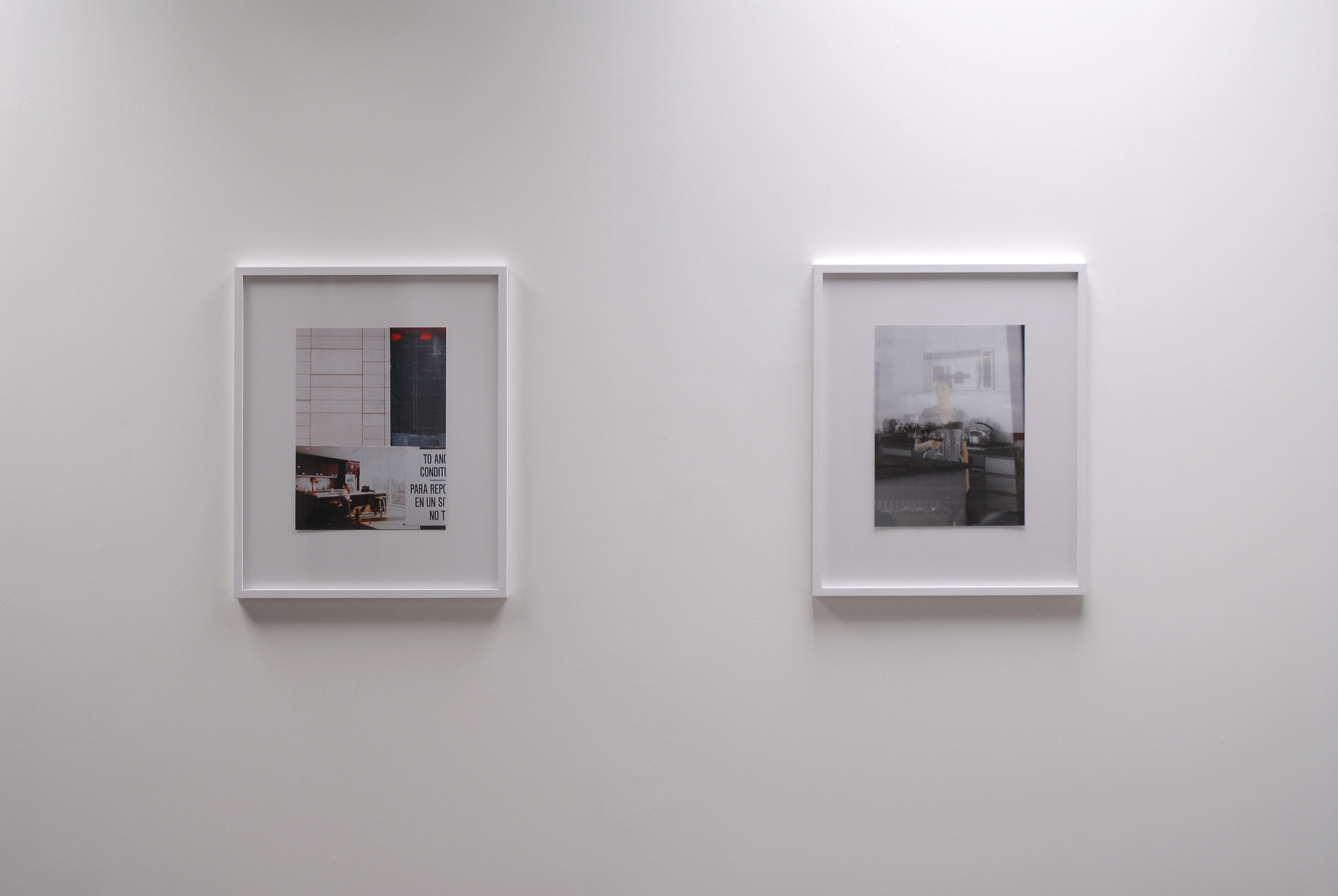
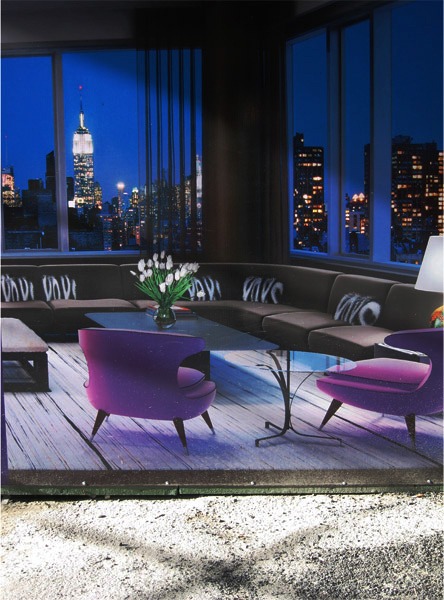
“Just as the living room appears on the street,[…]so
the street migrates into the living room.”
Walter Benjamin
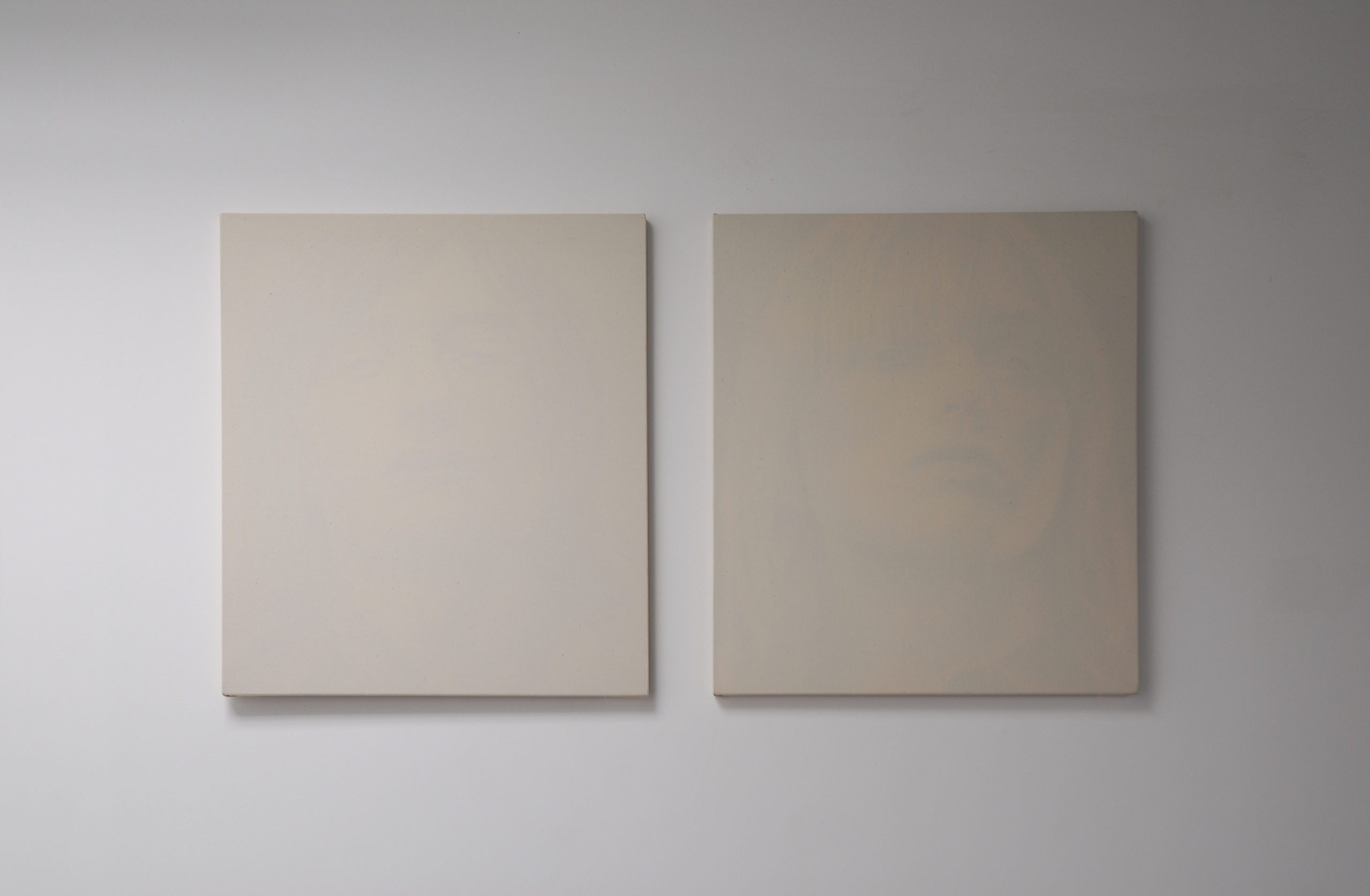
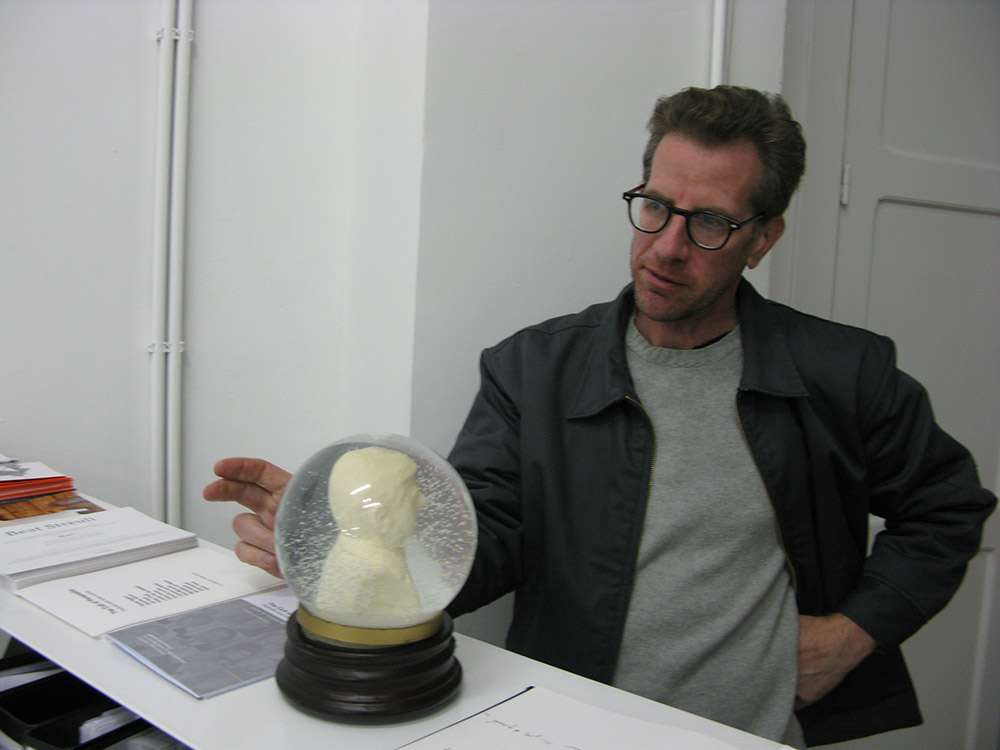
Peter Scott
Born 1960 in the United States.
Lives and works in New York.